My love affair with Lisbon – Portugal’s capital city – began when I scooped up a spoonful of Octopus Feijoada, put it in my mouth, and let it dissolve all my fatigue. The City of Seven Hills is made up of steep slopes, colourful homes and narrow lanes that will (literally) leave you breathless. My first impression of the city was not all that great. I was tired from a 3-hour bus journey, still reeling from my time in Porto and very very hungry. Then there was all that tourist crowd which completely overwhelmed me. So I did what I always do in times of distress – I let food guide me. Well-loved for its summers and sardines, Lisbon made me fall in love with it slowly – over-budget-friendly meals, fruity port wine and immaculate desserts. So here I am, talking about a fling, that unexpectedly turned into a love story.
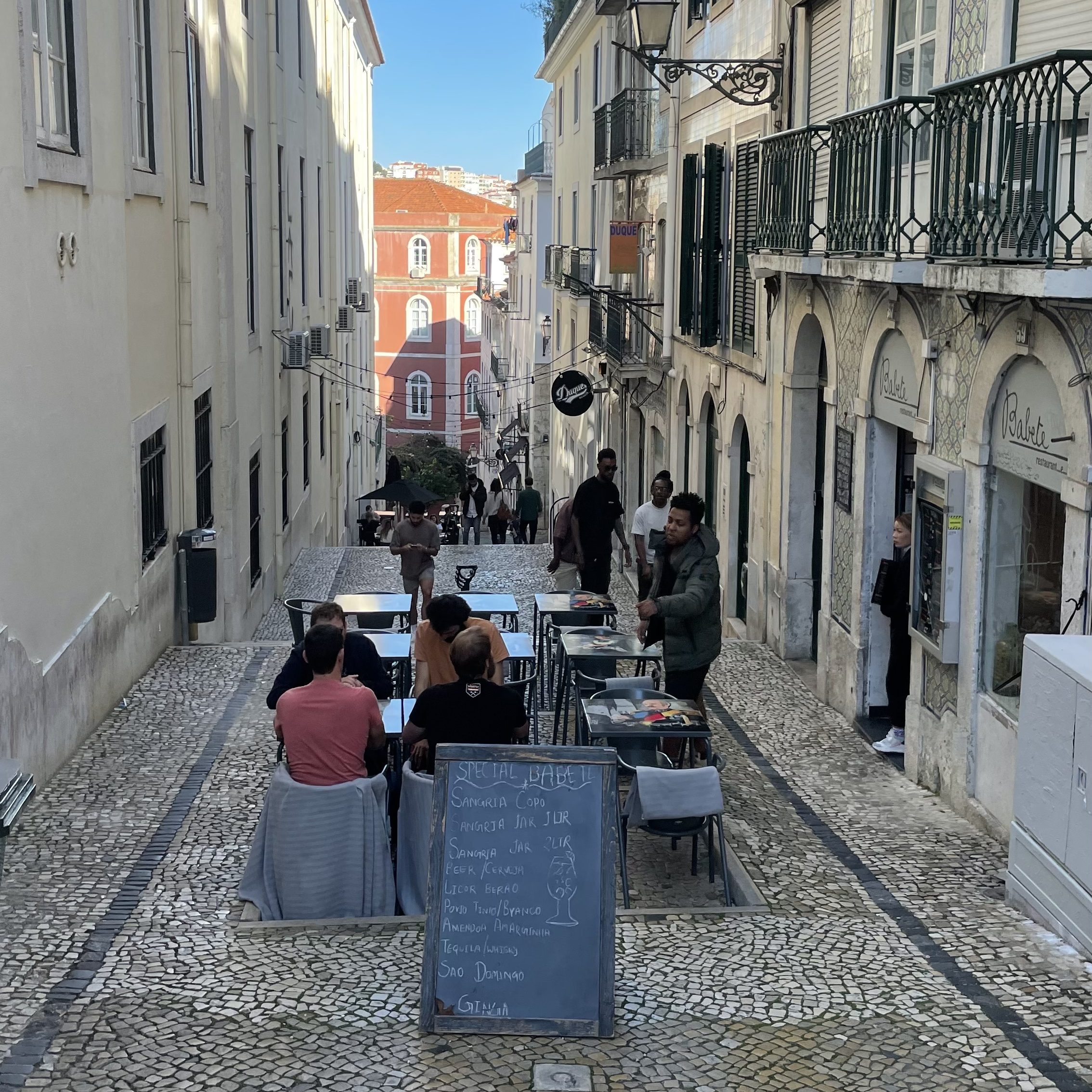
Feijoada and more
On my first day in Lisbon, I went around hunting for lunch, walking through steep lanes, hoping to find something that would make me stay. I stumbled into an alley with three restaurants – one more crowded than the rest. Having grown up in a tourist destination, I know better than to pick a restaurant teeming with foreigners (staff and customers). So I went to Mondengo instead, the one that did not have an English menu and mainly consisted of Portuguese-speaking guests. I ordered feijoada de polvo from their ‘menu of the day’ where all dishes were priced between 4-7 euros. The feijoada is a very popular dish in Portugal. It’s a hot gravy made of beans and sausages. Mine also has chunky pieces of octopus. They also served pickled olives and a loaf of bread for starters.
The Portuguese love their rice so the feijoada was paired with a steaming hot bowl. The highlight of the entire meal though, was when another guest asked for the same dish and was informed that it was over. He sighed, looked at me, realised I was eating the same, and laughed. Mondego’s menu is versatile anf filled with fresh seafood dishes. If you are craving a good meal, you should check it out.
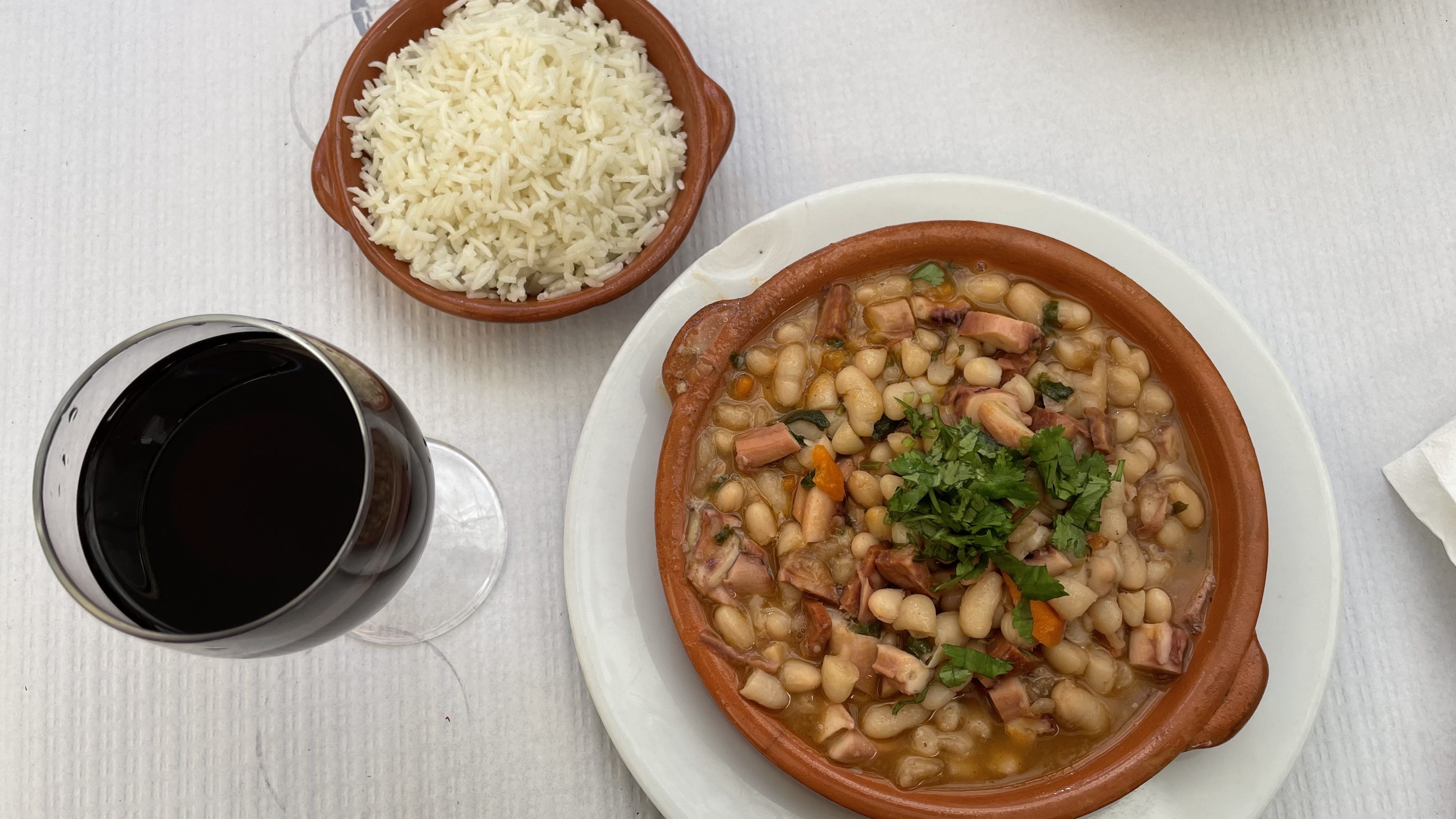
Apart from that, there is plenty of street food in Lisbon to try. Regardless of whether you are travelling to Lisbon on a budget or not, try these local Portuguese dishes atleast once!
Bifanas
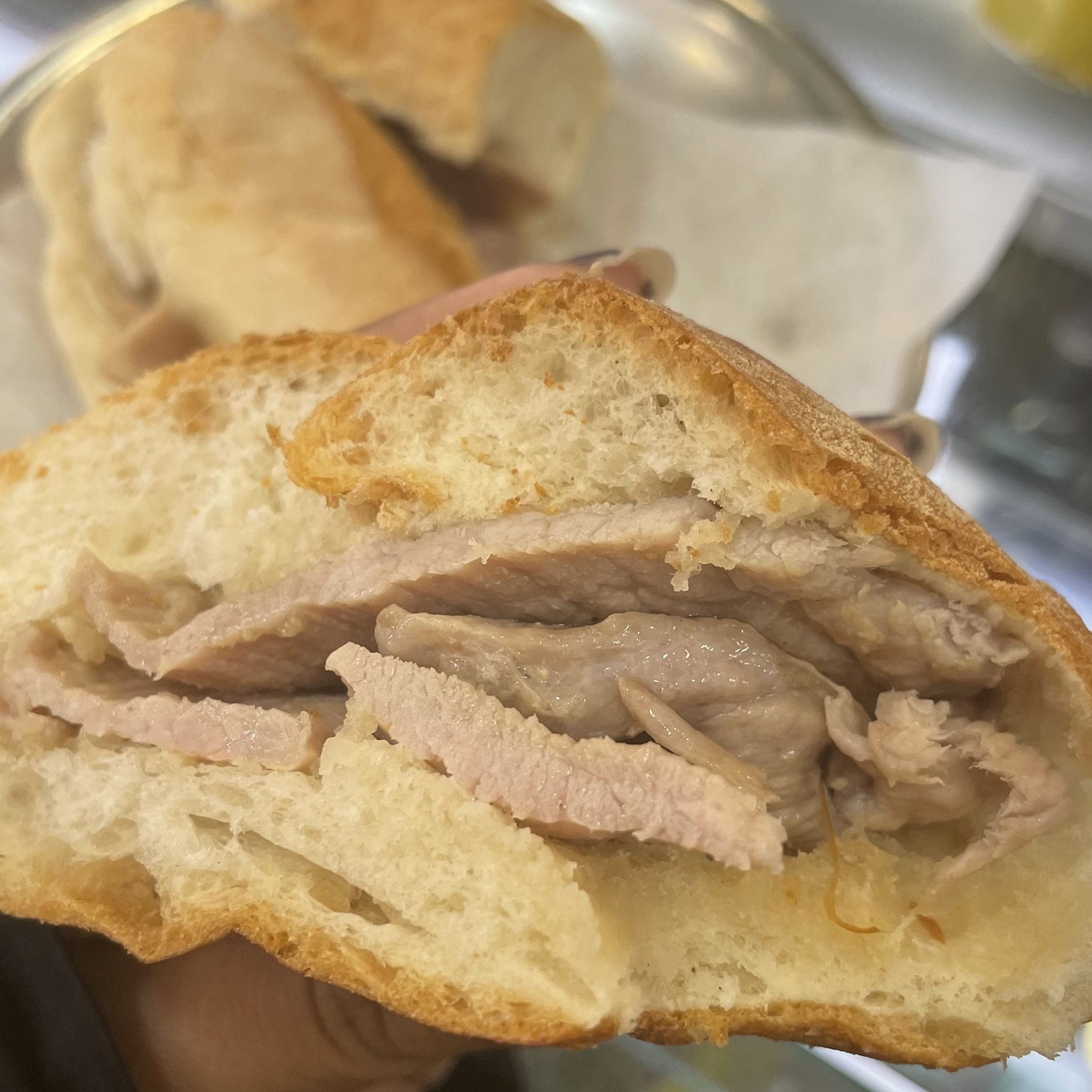
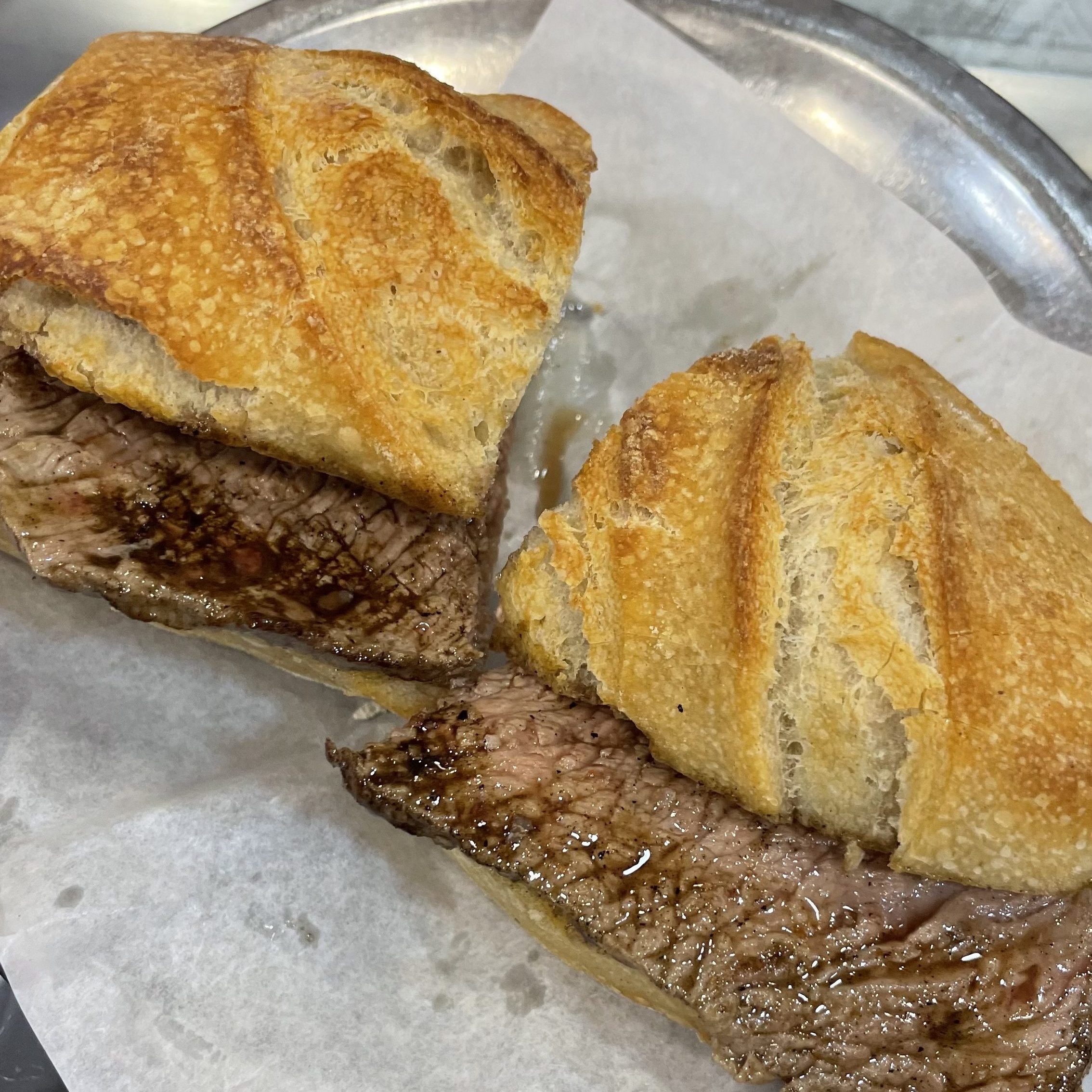
At first, a bifana might not look like much. It’s a sandwich made with pork/beef steak shallow-fried in garlic and chilli oil. In most cervejarias (Portuguese bars) you will find locals downing this delicacy like it’s the best thing they have ever had. And it is! Pair it with a glass of beer and I promise you, you will come back for more everyday. The meat is simple, flavourful, succulent and just perfectly cooked. That said, no two cervejarias in Lisbon will have the same kind of bifanas. They vary in flavour and texture of the meat, making bifana-tasting an even more magical experience. My favourite was this overcrowded bar called O Trevo. It’s located in the heart of the city and has outstanding service. Apart from that, A Merendeira is worth checking out for its bifanas too.
Price:
1 bifana – 2.5 euros
1 prego no pao (beef bifana) – 3 euros
Pastel de Belém
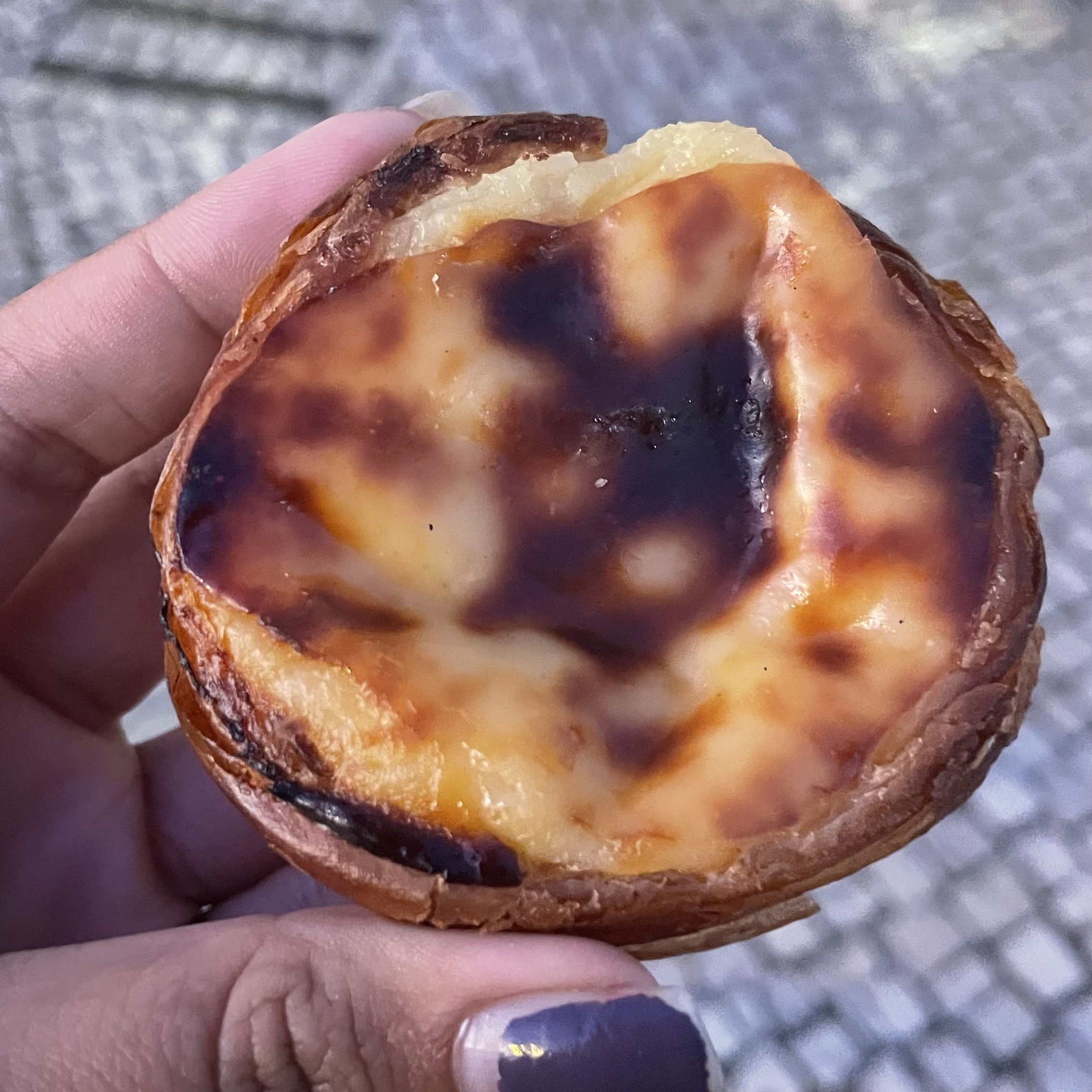
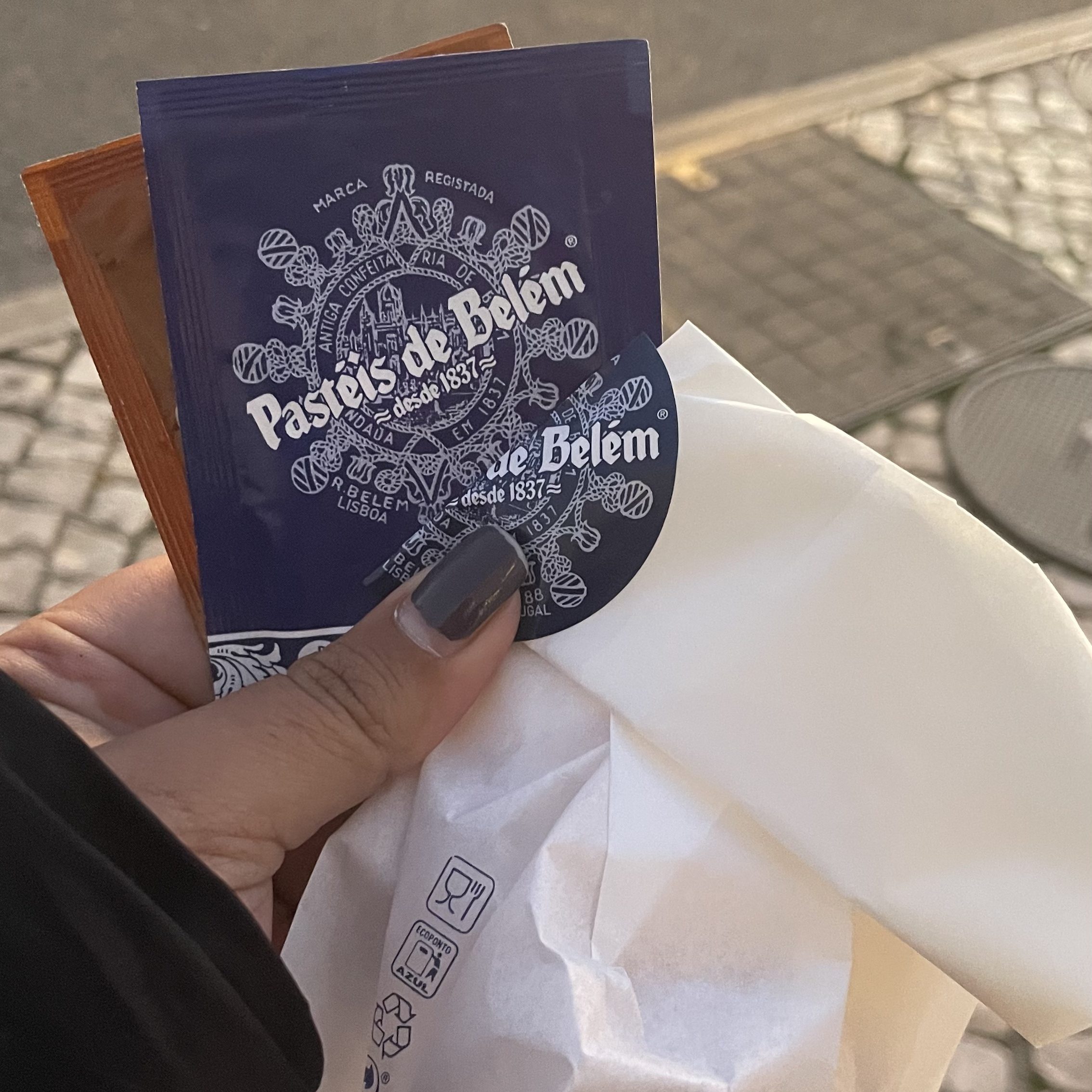
Yes, I know everyone has talked about this Portuguese dessert in every food blog about Portugal ever written. The Pastel de Nata is just one of those desserts, you know? It’s just worth every bit of hype it gets. The bite-size delicacy has a crumbly outer pastry, a custard filling and a slightly browned top. It’s not very sweet which makes it even more flavourful. If you want to tease your tastebuds some more, top it with cinnamon and don’t let anyone else tell you otherwise. I explored a handful of spots to find a good Pastel de Nata and there’s no reward for guessing where you can get your hands on the best one – Belem!
Pasteis de Belem is a spacious pasteleria (Portuguese Bakery) located on the outskirts of Lisbon, next to the magnificent Mosteiro dos Jeronimos (Hieronymite Monastery). As the story goes, when the clergy of the monastery was expelled during the revolution of 1820, someone began selling sweet pastries to make a living. Eventually, it picked the attention of visitors to the Torre de Belem (Belem Tower) and gained fame.
The locals continue to believe that there is a secret ingredient that only four people in the entire world know. We don’t know how true this is but apparently, they are never allowed to board a flight or engage in risky activities together since that would put an end to the decadent pastries.
The Pastel de Nata is just a popular variation of the Pastel de Belem and can be found all over the main city of Lisbon. While the bakers might tell you that they are both the same, trust me when I say they are not. There is a very tangible difference in their flavours, texture and the way they are served. The Pastel de Belem is packed warm and its outer pastry has a subtle crunch to it. So down all the magical Pasteis de Nata that you want to, but don’t miss out on the one in Belem because that will blow your mind!
Price:
1 piece – 1.2 euros
Ginjinha
Western Europe is all about wine – they enhance the
flavours of your tapas, pintxos, meats and everything else. While Lisbon’s port wine is the talk of the town, up in the mysterious hills of Alfama, they sip a different kind of poison. The Ginjinha or Ginja is a strong and sweet wine made from cherries.
Price:
1 small cup – 1.5 euros
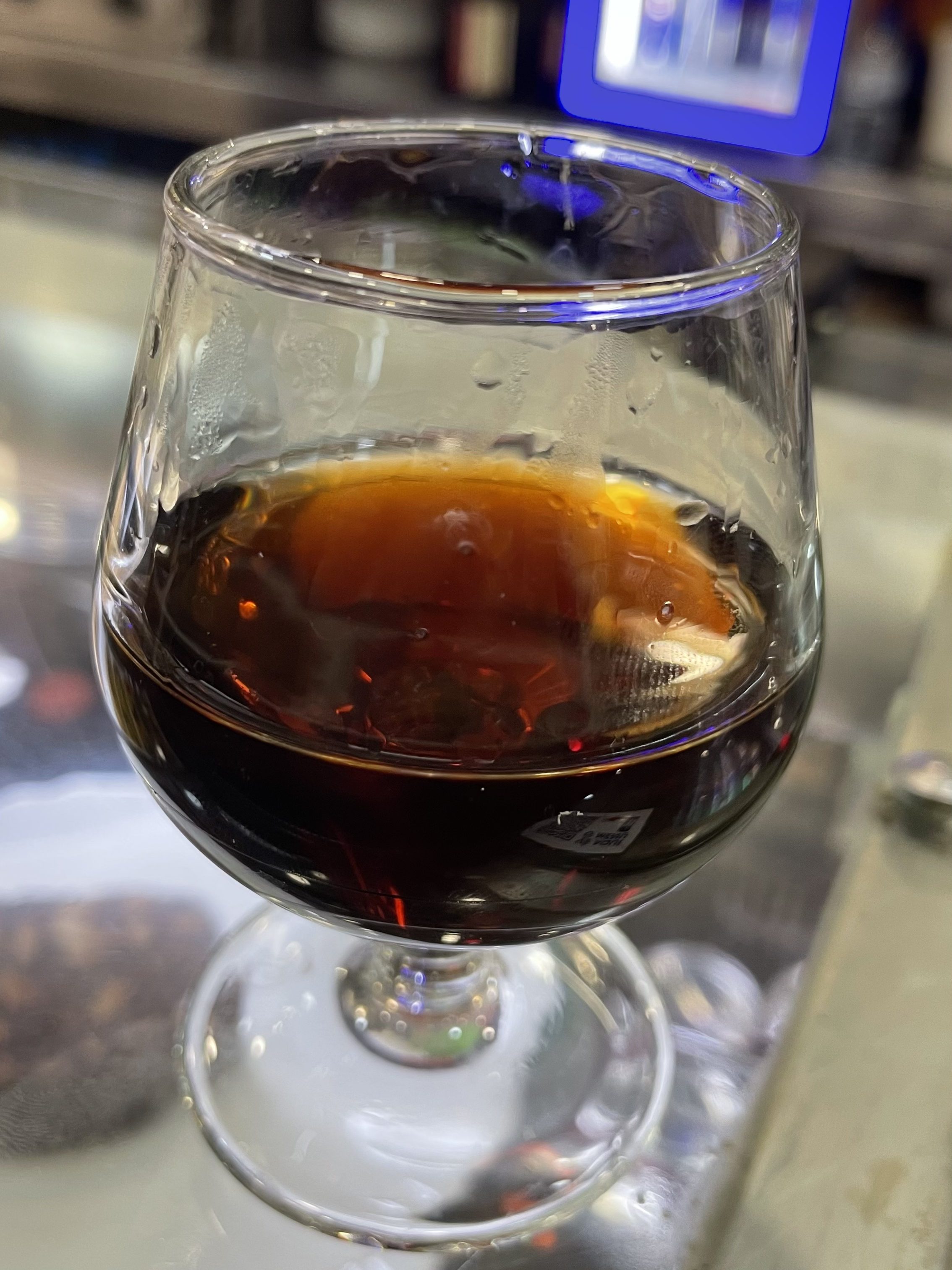
You can easily spot it in the city centre too but apparently, the one brewed by the older folks of Alfama is the real deal. While I was short on time, I did order a glass of it at O Trevo and oh boy, it’s something else! Walk through the narrow lanes of Alfama and just pop into any bar to get a taste of Lisbon’s sour cherry liquor.
Rissois
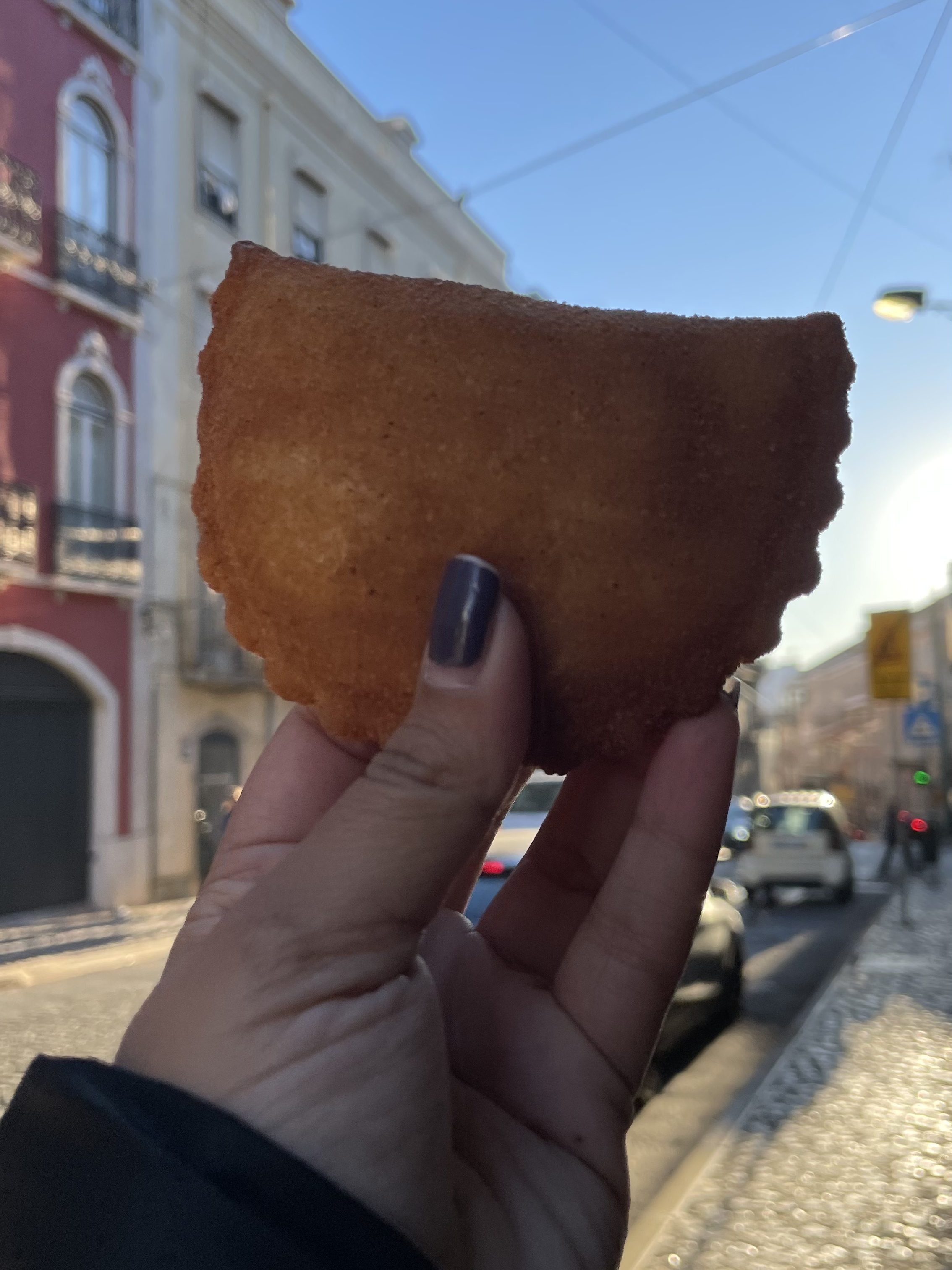
Growing up in Goa, rissois has been one of my favourite snacks. Traditionally, it was made as a chewy deep-fried pastry with a creamy prawn filling inside. However, modern-day chefs do not hesitate to revamp it with spinach, corn, mushroom, chicken or even chorizo stuffing.
In Portugal, they are a type of petiscos or bar food served at small taverns. However, you can even find them in bakeries being served hot in the morning. That’s how I found them.
One fine morning I boarded the tram 28 which took me through the city and dropped me off at its western end. So I decided to walk back and let the streets surprise me. And they did! I popped into a couple of pastelarias where I tried the rissol de camarão (prawn rissois) and rissol de leitão (pork rissois) and they took me to food heaven. These huge flavour bombs had a generous amount of stuffing that made for a filling breakfast. While I have always been a fan of prawns, this time the pork one had my heart. Pop into Doce Estrela around Campo do Ourique and Alva in Bairro Alto for some budget-friendly, local snacks. While you are there, pick up some Bacalhau or Croquettes too.
Price: Rissol de Camarão, Doce Estrela – 1.25 eurosRissol de Leitão, Alva – 1.25 euros
Panado no pão
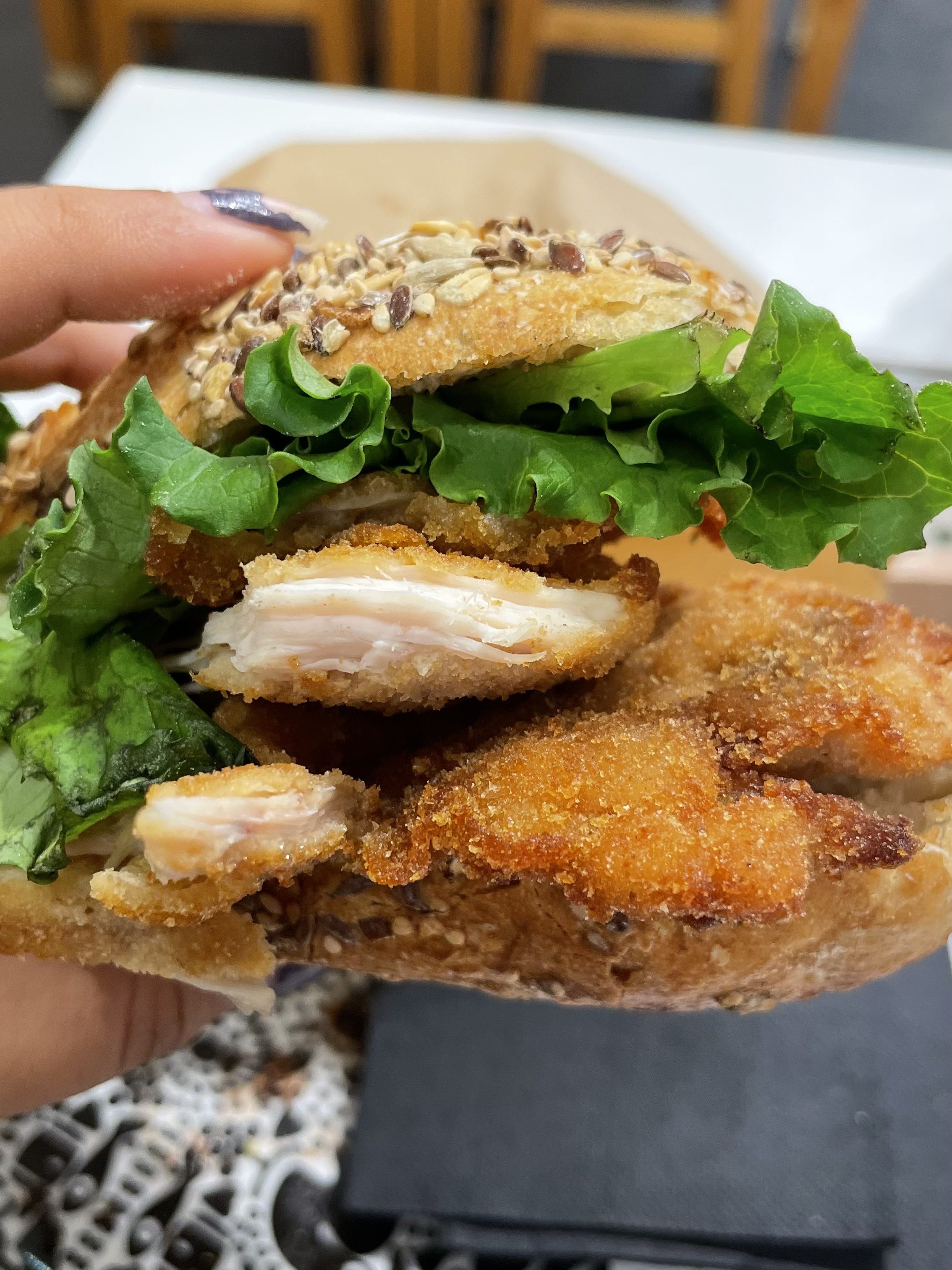
1 panado no pao – 2.5 euros
I noticed that the Portuguese eat a lot of fried food – much more than the Spanish. For someone who comes from a country like India where not adding enough ghee is a crime, I was more than happy to indulge. A popular bar snack I came across was the panado, which translates to ‘breaded’ in English. It’s a sin to not eat pão in the land that gave India its “pav’ so I surrendered.
Ideally, a panado no pão would be a fish filet dipped in bread crumbs, fried and served like a sandwich in a pão. However, some places serve panado as a chicken filet too. They’re both juicy and so soul-satisfying, you will ask for two. Pair it with a local beer and your vacation could not be any better. I kept frequenting O Trevo for its warmth, liveliness and good food. I recommend you to go there too.
Lisbon was nothing short of a food heaven. The city is replete with history, gorgeous architecture, exciting bars and some of the best food I have ever tried. It took me patience to get to know this city and boy, did it sweep me off of my feet. Even if you do not follow this guide, here’s a pro tip – just walk into pastelarias and cervejarias to get a gorgeous insight into Lisbon’s world of food.
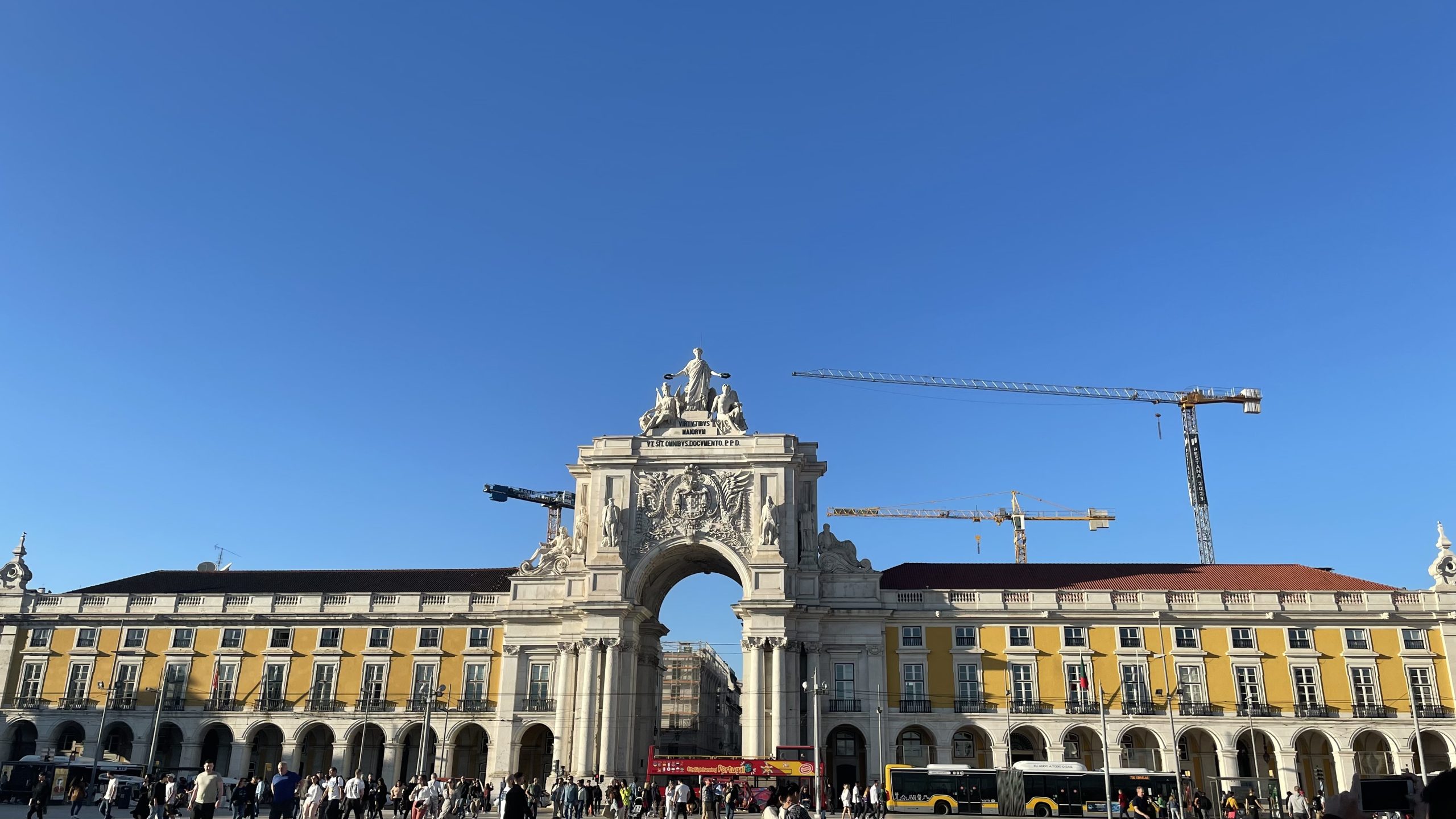
Leave a Reply